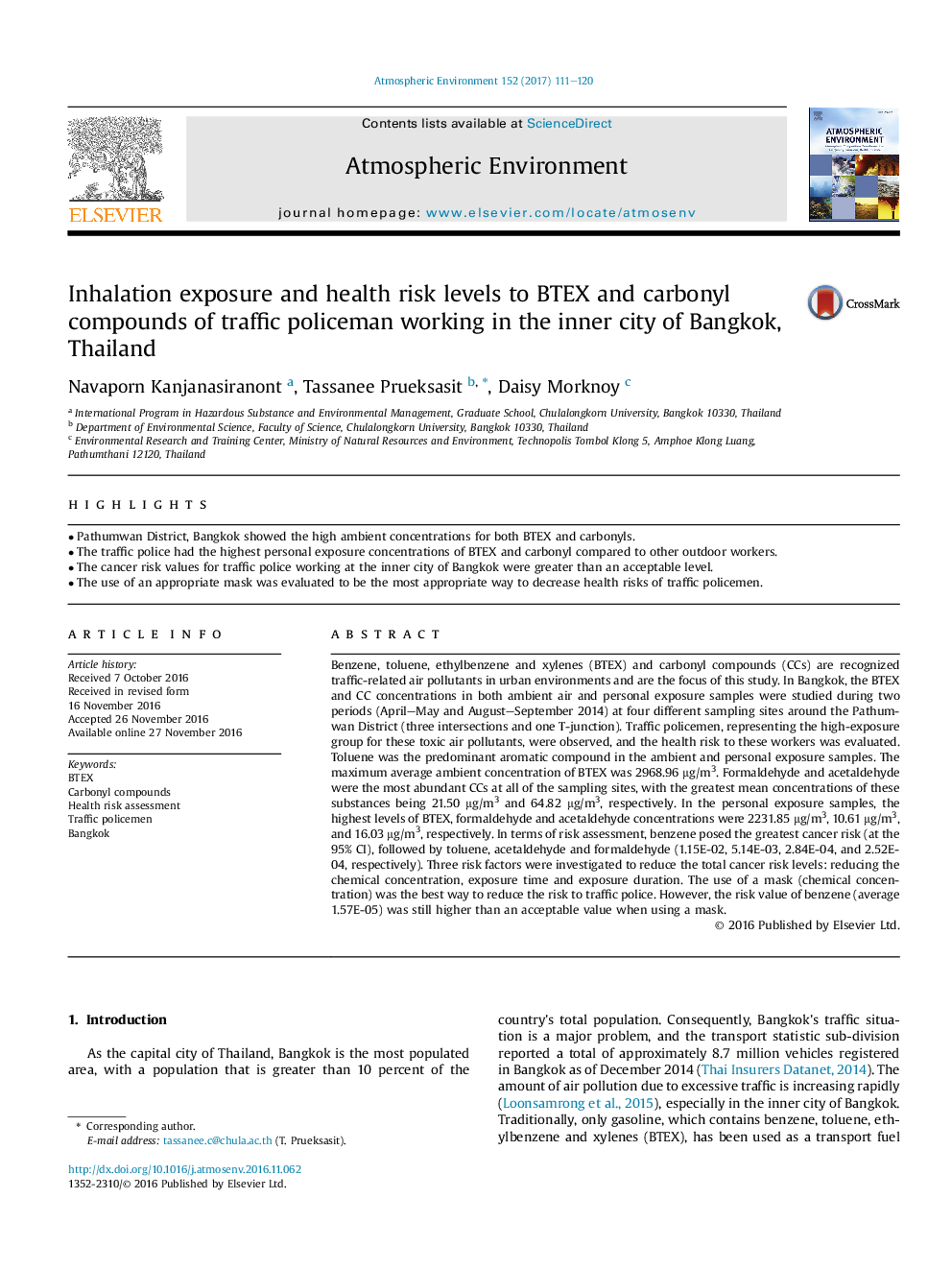| کد مقاله | کد نشریه | سال انتشار | مقاله انگلیسی | نسخه تمام متن |
|---|---|---|---|---|
| 5753393 | 1620322 | 2017 | 10 صفحه PDF | دانلود رایگان |

- Pathumwan District, Bangkok showed the high ambient concentrations for both BTEX and carbonyls.
- The traffic police had the highest personal exposure concentrations of BTEX and carbonyl compared to other outdoor workers.
- The cancer risk values for traffic police working at the inner city of Bangkok were greater than an acceptable level.
- The use of an appropriate mask was evaluated to be the most appropriate way to decrease health risks of traffic policemen.
Benzene, toluene, ethylbenzene and xylenes (BTEX) and carbonyl compounds (CCs) are recognized traffic-related air pollutants in urban environments and are the focus of this study. In Bangkok, the BTEX and CC concentrations in both ambient air and personal exposure samples were studied during two periods (April-May and August-September 2014) at four different sampling sites around the Pathumwan District (three intersections and one T-junction). Traffic policemen, representing the high-exposure group for these toxic air pollutants, were observed, and the health risk to these workers was evaluated. Toluene was the predominant aromatic compound in the ambient and personal exposure samples. The maximum average ambient concentration of BTEX was 2968.96 μg/m3. Formaldehyde and acetaldehyde were the most abundant CCs at all of the sampling sites, with the greatest mean concentrations of these substances being 21.50 μg/m3 and 64.82 μg/m3, respectively. In the personal exposure samples, the highest levels of BTEX, formaldehyde and acetaldehyde concentrations were 2231.85 μg/m3, 10.61 μg/m3, and 16.03 μg/m3, respectively. In terms of risk assessment, benzene posed the greatest cancer risk (at the 95% CI), followed by toluene, acetaldehyde and formaldehyde (1.15E-02, 5.14E-03, 2.84E-04, and 2.52E-04, respectively). Three risk factors were investigated to reduce the total cancer risk levels: reducing the chemical concentration, exposure time and exposure duration. The use of a mask (chemical concentration) was the best way to reduce the risk to traffic police. However, the risk value of benzene (average 1.57E-05) was still higher than an acceptable value when using a mask.
Journal: Atmospheric Environment - Volume 152, March 2017, Pages 111-120